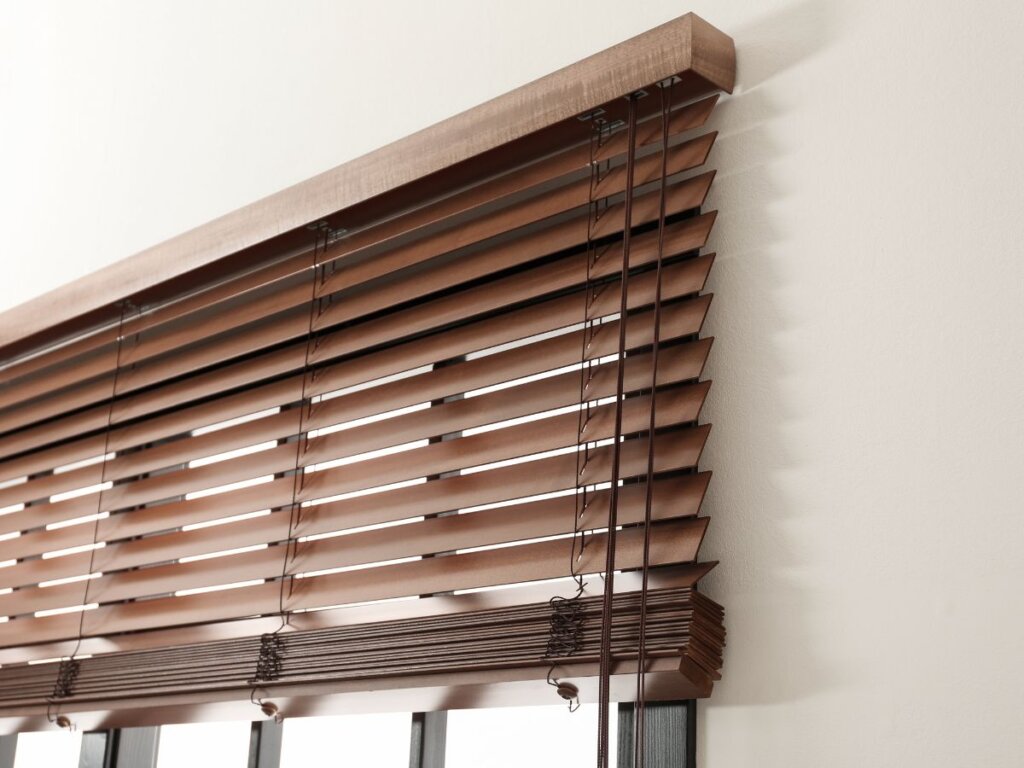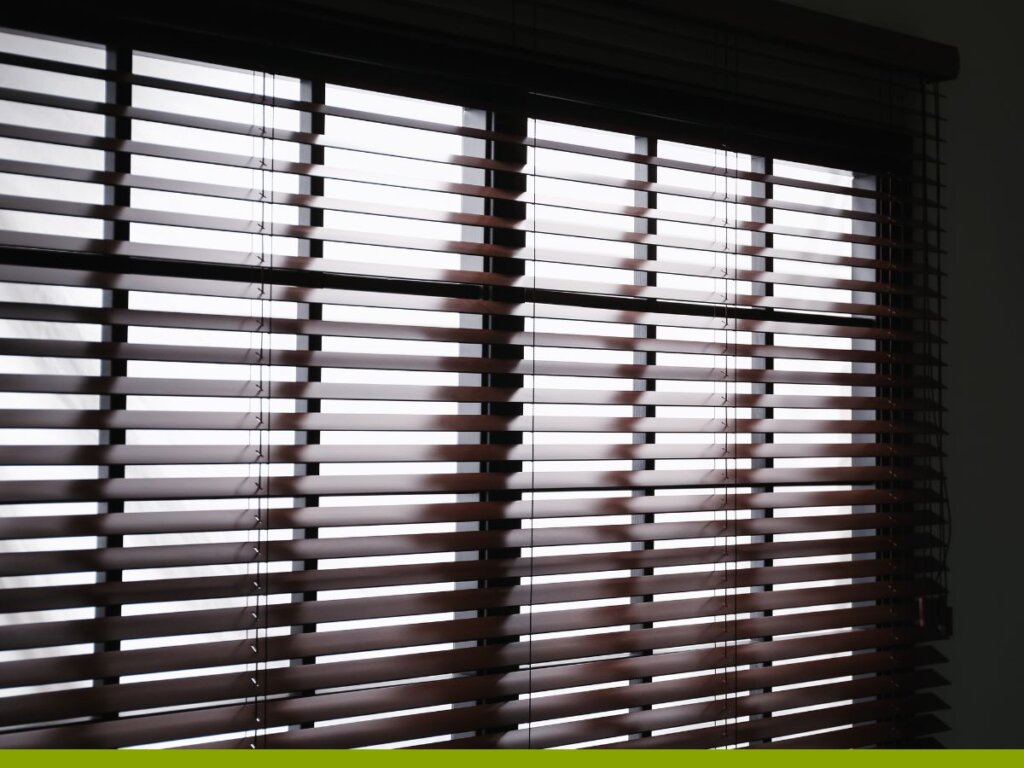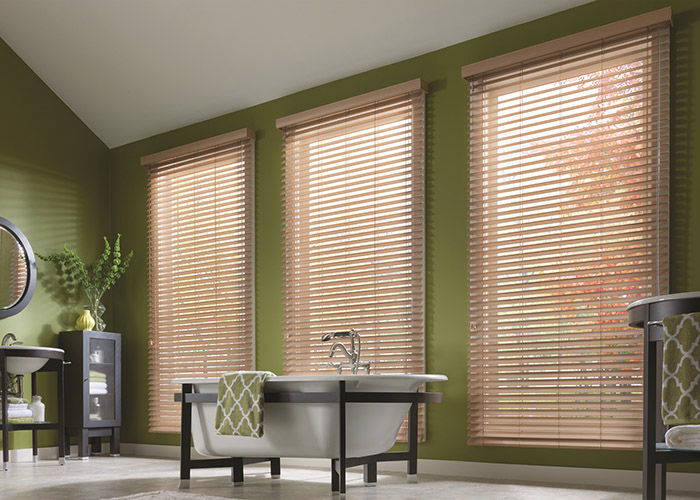When choosing window blinds for your home, two popular options are real wood blinds and faux wood blinds. Both can lend a warm, natural look while providing privacy and light control. But there are important differences between real wood vs. faux wood to consider before deciding which is better for your needs. Here are in-depth insights on performance, aesthetics, cost, maintenance, and other factors to help you determine whether real or faux wood blinds fit.
The Durability and Lifespan of Real Wood vs. Faux Wood Blinds

A key distinction between real and faux wood blinds is their durability and lifespan. Real wood blinds are constructed from natural wood materials like oak, maple, cherry, bamboo, and more. When properly cared for, real wood blinds can last for decades, thanks to natural wood’s inherent strength and resilience. The thickness and weight of real wood slats also lend a sturdy feel.
Faux wood blinds mimic the look of real wood using synthetic materials like vinyl, plastic, and PVC. These materials can be fairly durable but may be more prone to warping, cracking, or discoloration when exposed to direct sunlight over time. On average, the lifespan of faux wood blinds is 5-10 years, compared to decades for real wood.
Within faux wood designs, there are options like composite woods that aim for greater longevity than vinyl. But even these won’t match the staying power of real wood. Real wood is the better investment for window treatments built to last in the long run.
Customization and Design Versatility of Real and Faux Wood
Both real wood and faux wood blinds allow you to introduce natural, warm elements into your décor. However, real wood blinds offer more aesthetic versatility through customization. Here’s how the two compare:
- Real wood has greater variation in wood grain patterns, textures, and color tones for a unique look. Faux wood leans toward uniformity.
- Real wood can be stained in warm browns, reds, and more. Faux wood is limited to set colors from the manufacturer.
- Real wood blinds can be painted or whitewashed in any color. Faux wood colors are restricted.
- More customization is possible with real wood through staining, painting, gloss finishes, engraving, and wood species choice.
- Faux wood provides consistent color and texture across all slats. Real wood has natural variation.
- Both offer room darkening and light filtering options.
For contemporary, minimalist spaces, the consistent finish of faux wood has appeal. But for homes seeking one-of-a-kind character through wood blinds, real wood is the standout choice.
Comparing the Costs: Real Wood vs. Faux Wood Blinds
Another major difference between real wood and faux wood blinds is cost. Real wood blinds range from approximately $100 on the low end up to $500 or more per blind, depending on several factors:
- Wood species and cut: Exotic woods cost more than domestic. Thicker wood costs more.
- Size of the blinds: Larger blinds mean higher cost.
- Features and options Like hidden cords, motorization, remote control, etc.
- Quality and craftsmanship: Custom blinds from specialty workshops cost more.
Faux wood blinds average between $20-100 per blind, topping around $300 for higher-end options.
The price difference means real wood blinds are a more significant investment upfront. But their exceptionally long 20-30 years or more lifespan offsets the higher initial cost over time.
Ease of Maintenance: Real Wood vs. Faux Wood Blinds

Another area where real wood and faux wood blinds differ is maintenance. Because real wood is more sensitive to moisture, heat, and sunlight, it requires more care and cleaning to keep it looking beautiful. Here are some maintenance considerations:
- To maintain moisture levels and prevent drying or cracking, real wood blinds need occasional conditioning with products like lemon oil or beeswax.
- More frequent dusting and cleaning are needed for real wood vs. faux wood, along with periodic polishing.
- With real wood, avoiding direct sunlight exposure through curtains or shades helps limit discoloration or bleaching of the stain and wood over time.
- Any scratches or dings in real wood must be spot-treated to avoid damage.
- Faux wood is very low maintenance, only needing the occasional dusting or wipe down with a damp cloth.
For those who don’t want the added maintenance of real wood, faux wood is the more convenient choice. But real wood’s unparalleled beauty and longevity are worth the extra care for many.
The Environmental Impact of Each Option
Both real wood and faux wood carry certain environmental advantages and disadvantages:
- Real wood is a renewable and biodegradable resource, making it eco-friendly. Types like bamboo regenerate quickly. However, manufacturing real wood blinds produces waste and greenhouse gas emissions. And trees are cut down to harvest the wood.
- Faux wood blinds utilize recycled plastics like PVC, reducing landfill waste. But vinyl blinds aren’t biodegradable and have some negative impacts from manufacturing and shipping.
For the most eco-friendly choice, look for faux wood blinds made with recycled and recyclable materials with greener manufacturing processes. Or explore sustainably harvested real wood options like bamboo or Forest Stewardship Council (FSC) certified woods.
Key Takeaways When Choosing Between Real Wood and Faux Wood Blinds
- Real wood blinds are more durable in the long term but require more maintenance. Faux wood is lower maintenance but has a shorter lifespan.
- Faux wood offers more uniform colors and textures, while real wood provides stunning customization for a unique look.
- Real wood costs significantly more upfront, but saves money over decades of use. Faux wood is very budget-friendly.
- Both real wood and faux wood have environmental pros and cons to weigh.
- Before deciding between real or faux wood blinds, assess your priorities, including budget, design style, maintenance preferences, and sustainability impact.
No matter your choice, properly installing and caring for your blinds will help them look beautiful for years. For further guidance or to discuss custom window treatments, contact the experts at Made in the Shade Eastern Shore. Our team is happy to help you choose the perfect real or faux wood blinds for your home!














